
desy - 2-11-2009 at 12:42 PM
Shipping: Shipping time was roughly 3 business days. The kite was purchased from a dealer in Huntington, NY. The shipping charges were around $30. The
kite came in a box that ensured safe travel and minimal risk of anything happening during transit.
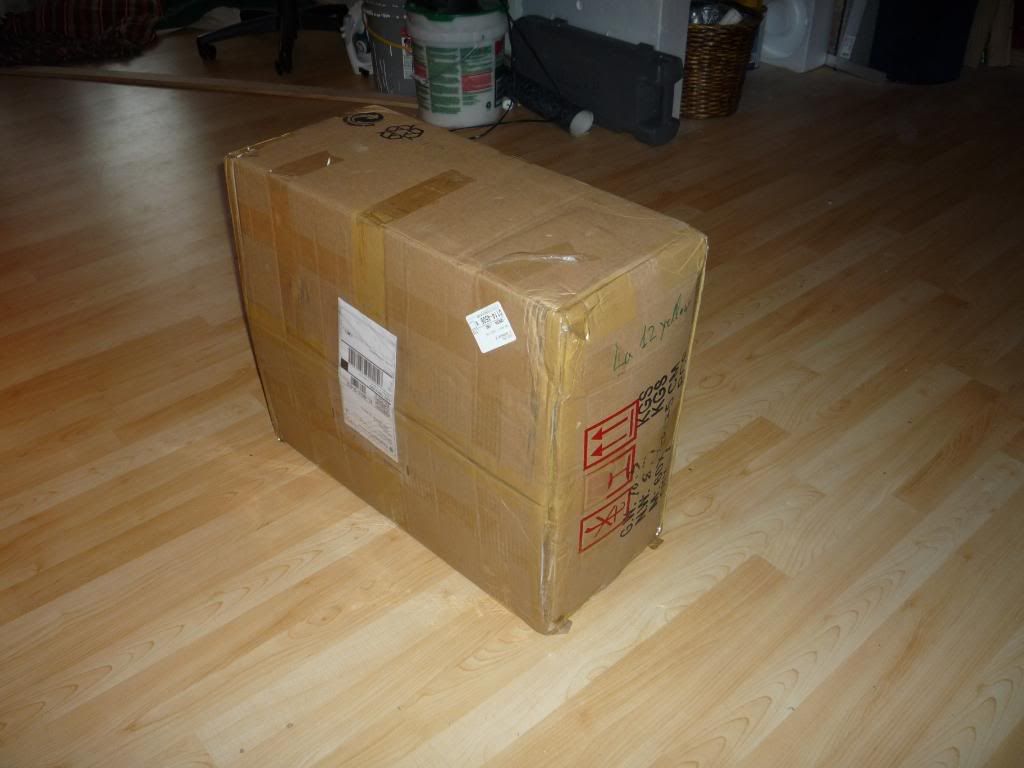
Included: For the price of about $480 (including shipping) I got the 12 meter Latitude from Latitude, a bar, bag and pump shipped to my door.
Originally the pump was not included but the good folks who added it, did so because I purchased the package from them without going through ebay
saving them a couple bucks in fees which says something about the people on the other end. I had a good feeling at first digging into the contents of
the box.
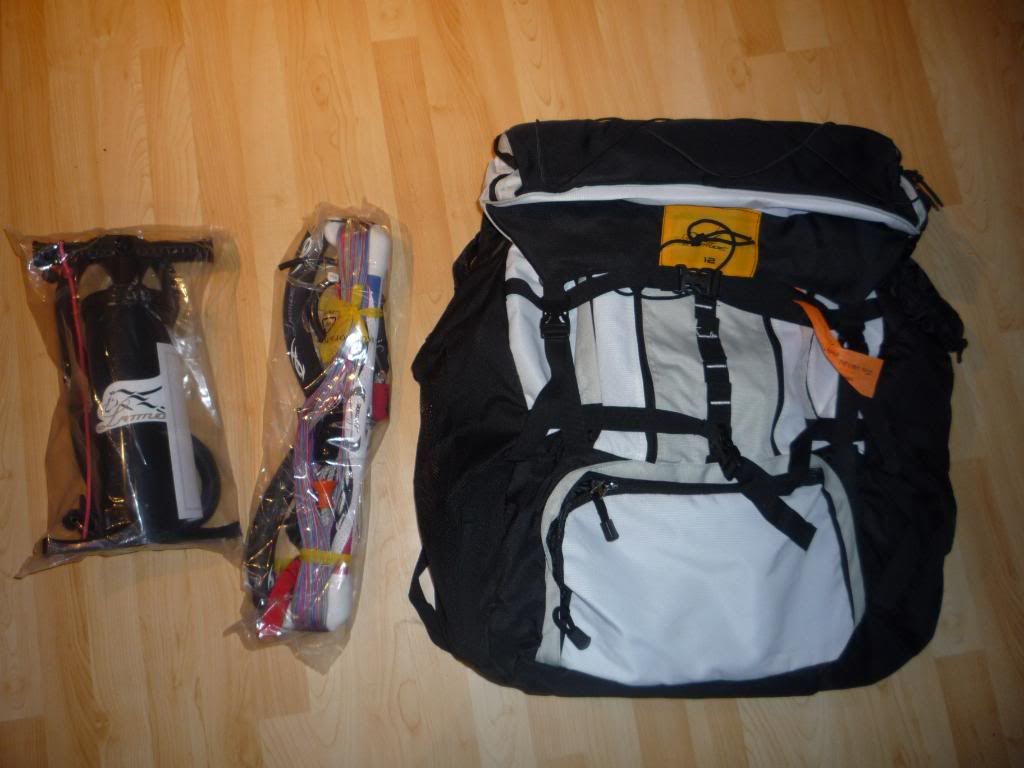
Kites Outta the Bag: When I took the kite out of the bag, the first things I noticed was discoloration on the canopy. It looked the color of motor oil
and it I was a little concern expecting the kite to be in pristine condition. Obviously, this will have no effect on the performance but try buying a
new car with a scratch on the door, it just doesnít make you feel warm and fuzzy inside. When you count the free pump, and the stain on the kite, for
me these were offsetting penalties, but then again, I was in need of a new pump, other kitesurfers might not be as complacent.
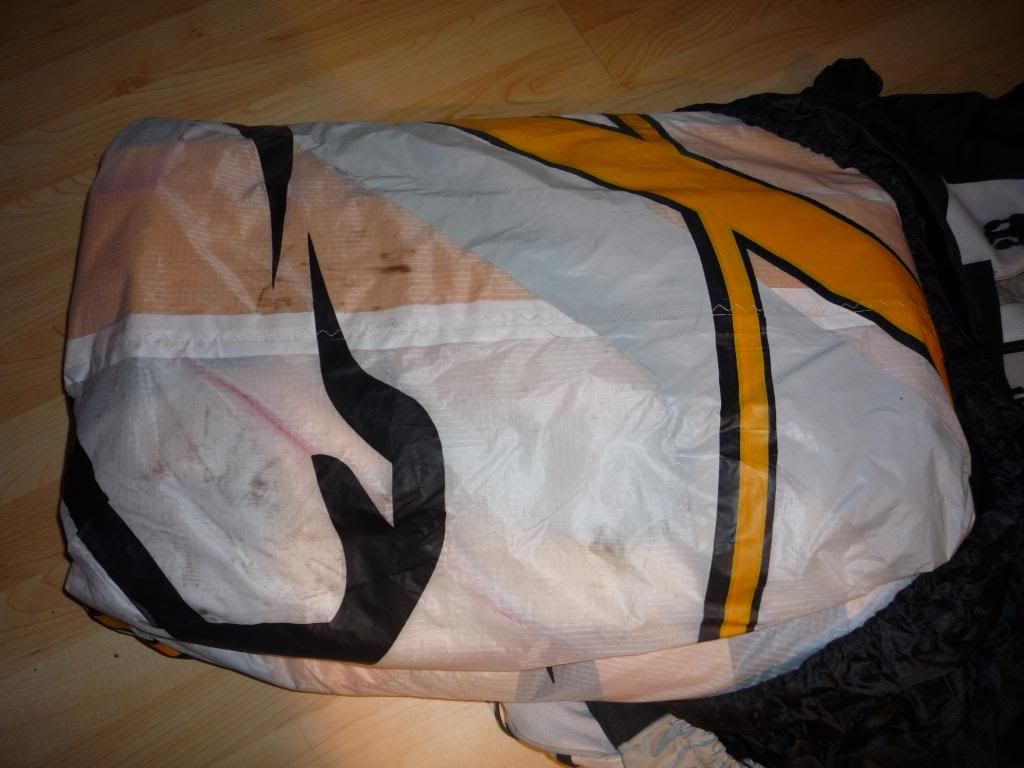
Bar and Lines: When first looking at the bar, I was excited to see if Latitude had come up with something I hadnít seen before. First, I noticed that
there would be much less throw in the bar, which would indicated less depower, than the Naish bar Iím used to. Next, I noticed the size and robustness
of the floats on the end of the bars. The website pictured the 2008 bar as having short floats, but this was not the case for the bar I received. The
power adjustment straps seemed to be in the right place, and the Velcro does a good job of holding them in place. Next my attention was turned to the
stopper, an orange circular disk which is not easily movable. The bar had a safety line that went through the bar which Iíve had, and liked, before.
In my first flight, I found that the safety line was too short and was fully extended while the kite was in flight. Additionally, the way the safety
line was set up, Iíd be in real trouble if I had to quick release as the kite would not depower if I should have to self rescue. Lastly the elastic
straps on each side of the end of the bar help to keep things clean when wrapping up the lines after a session. My last gripe with the bar is the
stopper. While steering one handed, I noticed that the stopper extends over the bar and on a number of occasions my fingers were pinched between the
bar and the. Itís something I can get used to avoiding but is never an issue with my other bar.
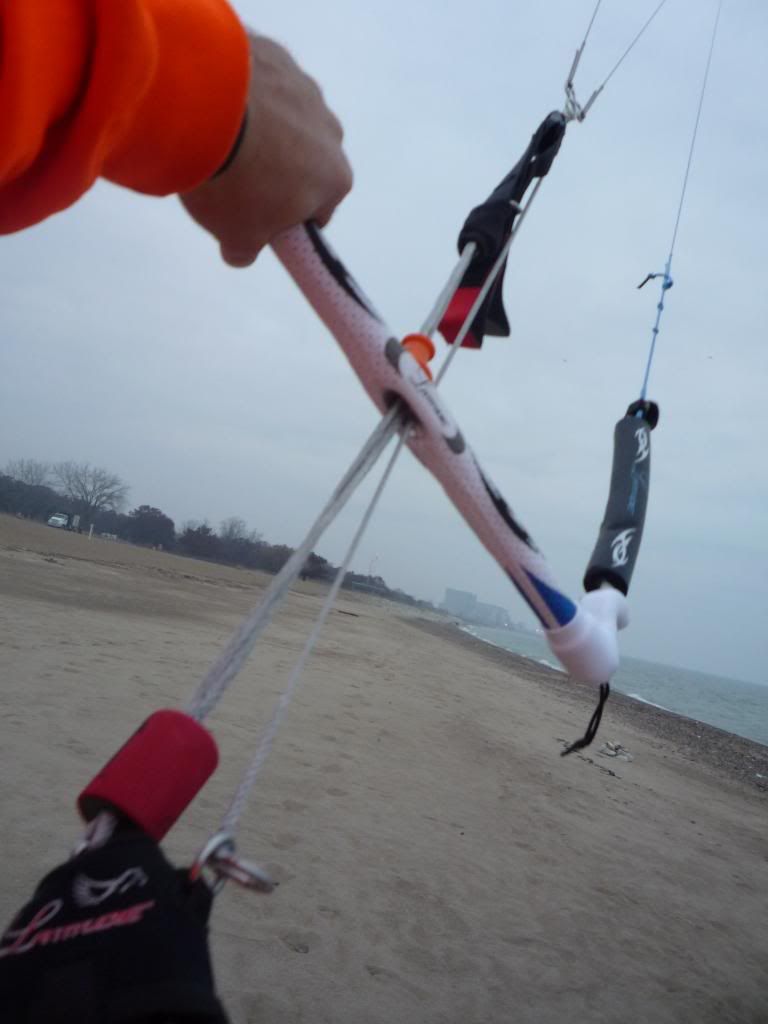
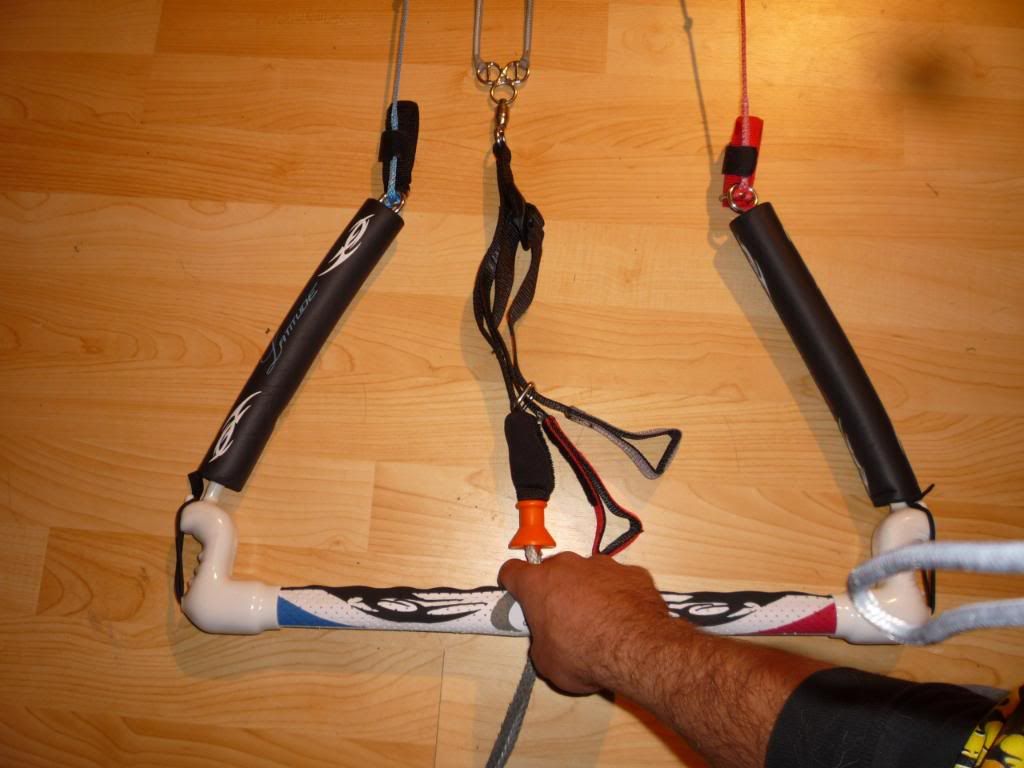
The Kite: The kite is standard in shape and size, nothing odd or new here but with a total of seven struts for structural integrity. Inflating the
kite is easy because of the one pump system, which now days is like mentioning that a new car has power windows and locks, it should be standard. The
Latitude has hoses that go from the Leading Edge to each strut that benefits in the event of needing to replace a strut, there doesnít need to be
extensive work with the bladder. My only concern was the rate at which the kite and struts became totally deflated. It seemed as if the struts wanted
to hold air even when the deflate valve was open. This is due to the length of the hoses, they seem excessively long and will pinch shut if the angle
is right. Shorter hose lengths will solve this problem, a modification that can be easily done on your own. The hoses also have clips that will seal
them from the leading edge incase youíd like to deflate the leading edge and keep but keep the bladders inflated. One thing I really like about
inflating this kite is the fact that there is a ball stopper on the inflation side of the kite, youíre not going to loose any air pressure when you
pull your hose to close the valve. Next, the pulley is not located on the kite itself, it is located on the lines which allows for easy replacement in
the event that the pulley should need to be replaced. Hooking the kite up to the lines is simple because the lines and bridles are both color coded to
ensure that no errors can be made.
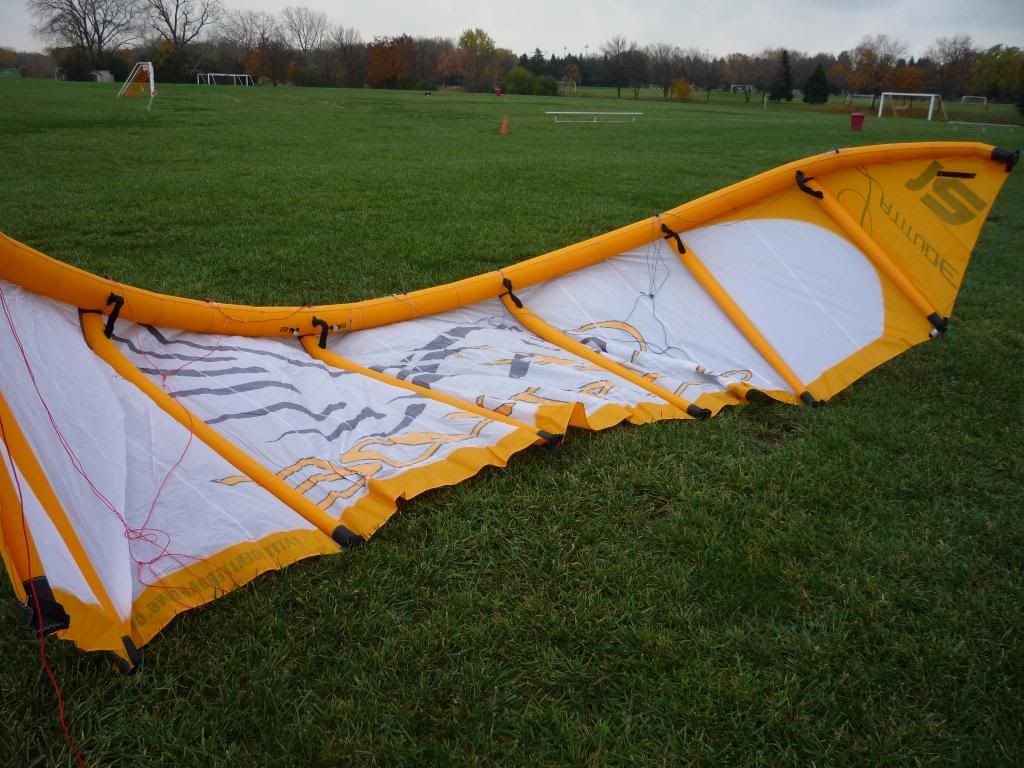
First Flight: After self launching, I felt immediately like the kite was just an extension of my body. There were no weird stalls, no unexpected
pulls, just butter smooth power right through the front lines. Steering the kite back and forth through the power window you feel the serious power
this kite is capable of even in steady 9-12kt winds. As with any new kite, itís good to really get a feel for what youíre dealing with, and what the
kite is capable of on the beach (if thereís room). The kite is so stable even with the lines completely untuned from the factory. The kite will hang
nice and steady even with hands off the bar. As the kite neared the top of the window, I pulled back on the bar to power up the kite and ever so
gently, I was lifted off and then set back down on the ground. A flurry of excitement shot through me as I grabbed my board and headed to the water.
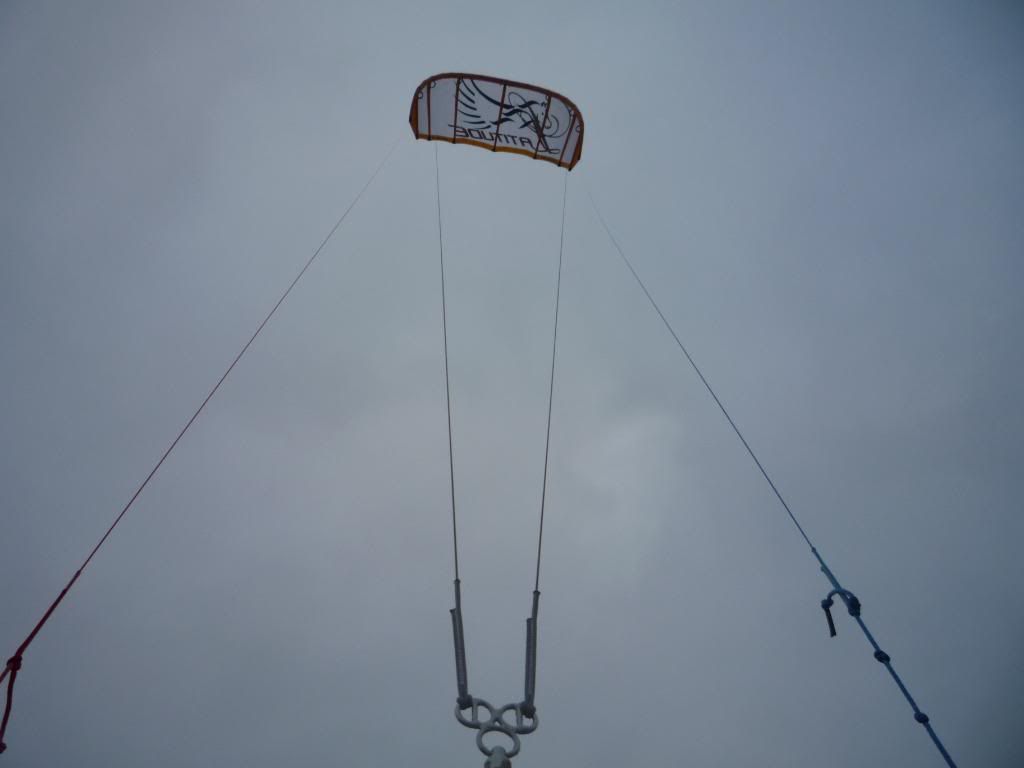
On the water, the kite is easy to control and totally predictable. The kiteís flying characteristics are so smooth that it allows newer riders to
focus less on keeping their kite in the air and more on approaching waves, angle of attack, and riding position. If a newbie should wipe out, even
become completely submerged, you can feel exactly where the kite is with one hand on the bar. Bar pressure is good, not too floaty, nor too heavy. Bar
pressure is about as much as some 9m kites, but much less than my previous 2:1 setup. One thing I noticed while on the water was the way this kite
held its shape. Though itís a 12m I feel like it is more efficient than other bigger kites Iíve flown especially given the conditions. This effect
could be the extra struts providing more windward surface area. On the water, I noticed that there was a significant increase in power with the bar
pulled in and the kite does not over fly. In lower wind conditions, Iíd like to see the kite fly a little faster, thereís a slight tendency to stall
even with the bar totally out. This kite will definitely get you moving in a hurry though. Steering the kite was easy too. The kite does not steer
super fast, perfect for a newer to intermediate freerider. Youíre looking at steady predictable, controllable turning from this 12 meter Latitude.
Overall: Overall, I am unbelievably pleased with this kites performance. Considering itís a brand new 12m kite with bag, bar, and pump, I feel like
itís a steal at about $480. The bar that they sent me was not the 2008 bar as advertised on their website so I feel like I was shorted there. Latitude
has some development issues to work out for their newer bars, especially for the safety line thatís about two inches too short, and the stopper that
pinches your fingers if they get caught between it and the bar. My last cause for concern is how you keep yourself attached to the kite during an
emergency release. Your choice is to attach your leash to the swivel where the original line was and risk not fully depowering the kite if you get in
trouble or pull one of the rear lines and watch the kite spiral to the ground giving you a nice puzzle of twisted line to deal with when you make it
back to the beach.
Final Thought: I had a sailboat once that I bought for $400. It needed some work but it sure was fun to sail. Every time something went wrong with the
boat my dad and I would say, ďfour hundred dollars.Ē It meant that when things went wrong, we were reminded of the fact that we only paid $400, but in
our minds we knew we were well ahead of the game. This is exactly how I feel about this package. Pick up the 12m Latitude brand new for $480 or less,
and youíll have tons of fun, get a great kite, and be well ahead of the ďbrand new kiteĒ game.
Make It Safe: Here is a modification that I did to my Latitude bar and line setup which will make it the very same setup as my Naish safety system.
First, cut the safety line that runs through the bar, has the ring on the chicken loop and attaches at the swivel. Save the ring and remove one of the
front lines from the swivel. With that removed, attach the front line to the ring, like it shows in the picture, then pass the front line that
attaches to the kite through the larger opening on the respective side of the swivel ring. The smaller side might work but is harder to pass the knot
through, and there is enough contact between the ring and the swivel when itís under load. This will depower your kite 100% should you get into
serious trouble and it makes self landing your kite into the wind a cinch.

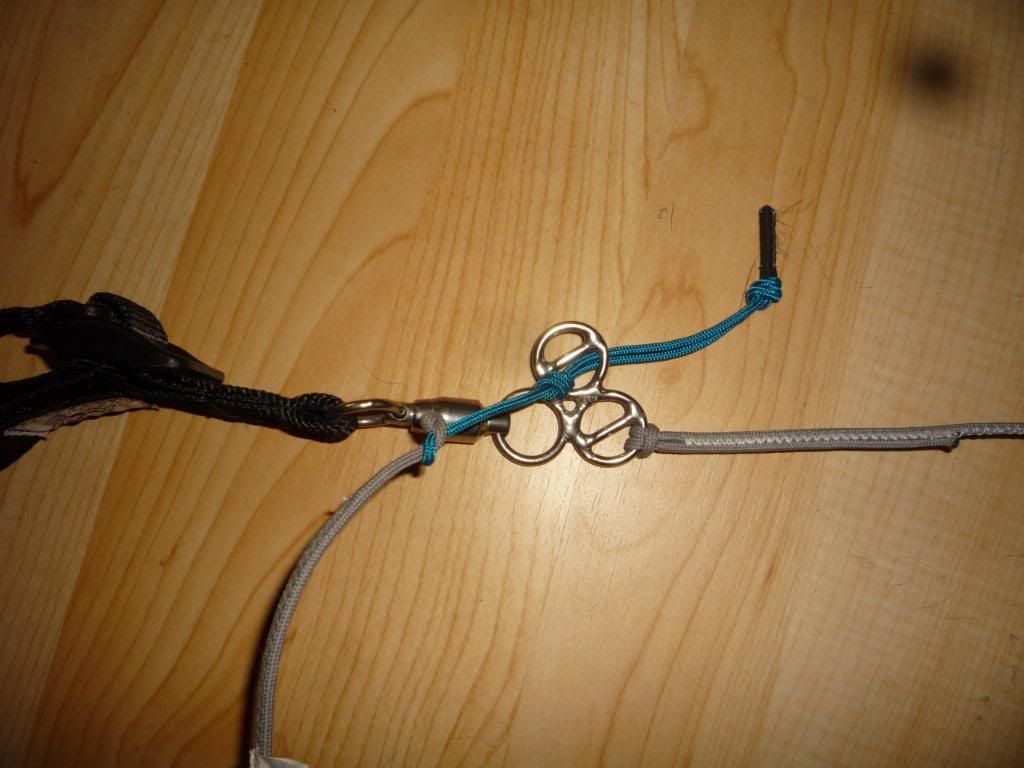
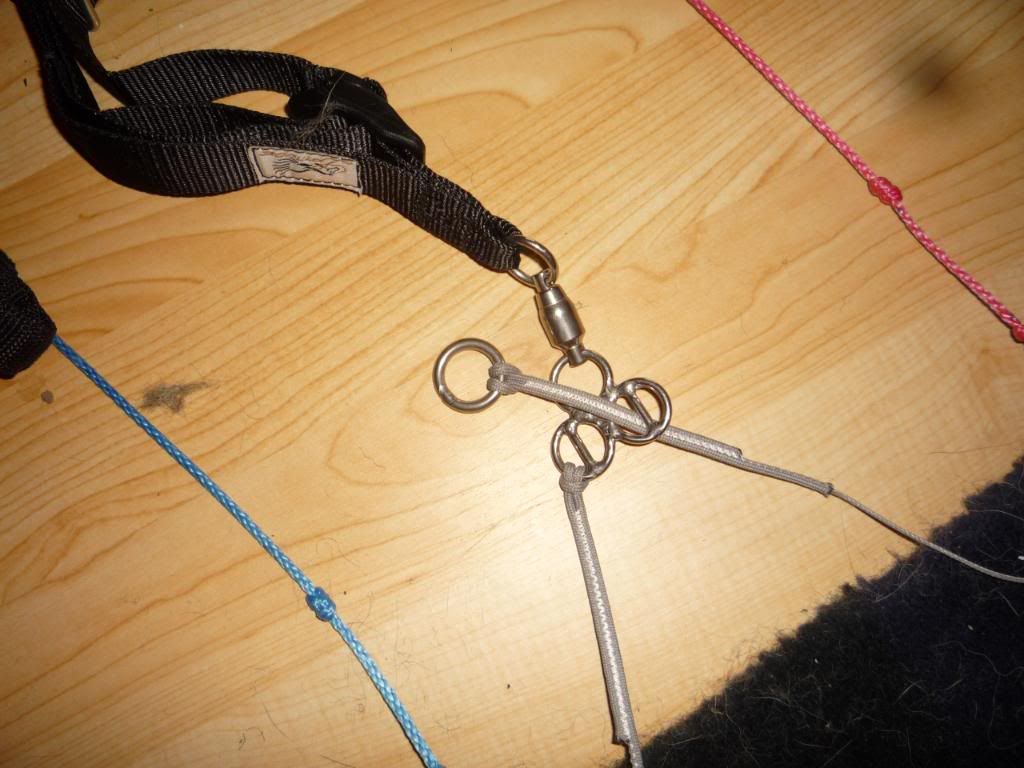
-dewsy
f0rgiv3n - 2-11-2009 at 01:06 PM
awesome review man!!!! :eekdrull: Thanks for sharing!
burritobandit - 2-11-2009 at 01:24 PM
Great review, man 
"After self launching, I felt immediately like the kite was just an extension of my body." nice.
"Final Thought: I had a sailboat once that I bought for $400. It needed some work but it sure was fun to sail. Every time something went wrong with
the boat my dad and I would say, ďfour hundred dollars.Ē It meant that when things went wrong, we were reminded of the fact that we only paid $400,
but in our minds we knew we were well ahead of the game."
So, so true.
tridude - 5-11-2009 at 01:53 PM
nice............. my son has a couple of their boards........................sweet indeed.............enjoy that 12

Houston AirHead - 5-11-2009 at 02:24 PM
i really like that bar













